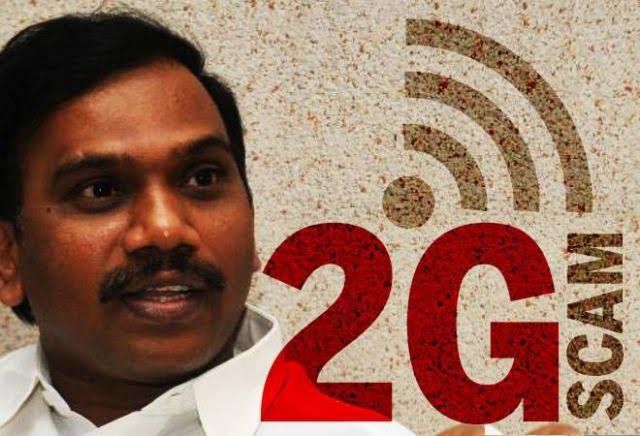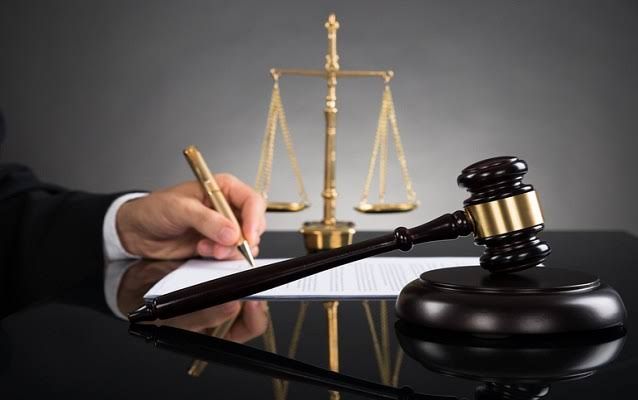Author: Samarth Jeet, Geeta Institute of Law, Panipat, Haryana
To the Point
The 2G Spectrum Scam of 2008 stands as a crisis moment in India’s legal and political history. At its core, it raised fundamental concerns about governance, allocation of public resources, and the limits of criminal accountability in administrative decisions. The case emerged from the allocation of second-generation (2G) spectrum licenses to telecom companies at prices fixed in 2001, disregarding the exponential growth in the telecom sector by 2008. The decision to allocate licenses on a “first-come, first-served” basis instead of adopting a more transparent and competitive auction method led to significant controversy. Allegations of favouritism, controlling, and bribery quickly followed. The scam drew national and international attention, particularly after the Comptroller and Auditor General (CAG) of India estimated a notional loss of ₹1.76 lakh crore to the public exchequer due to under-pricing and arbitrary allocation.
This article examines the intricate relationship between criminal fault, public accountability, and executive discretion in order to provide a legal interpretation of the 2G Spectrum Scam. It further examines how courts interpreted constitutional and statutory principles to address administrative corruption, and why despite massive public outrage, the criminal prosecution ultimately failed to secure convictions.
Abstract
The 2G Spectrum Scam exposed the vulnerabilities in India’s regulatory and legal mechanisms, particularly with respect to the allocation of valuable public resources like telecommunications spectrum. The core controversy stemmed from the decision of the Department of Telecommunications (DoT) under the Ministry of Communications to issue 2G licenses to private telecom operators in 2008 at 2001 prices without following a fair and transparent process. This allocation bypassed competitive bidding, despite clear recommendations from regulatory authorities and market indications suggesting the high commercial value of spectrum.
The CAG’s report alleging massive losses and favouritism led to public outcry and judicial intervention. The matter soon escalated to the Supreme Court, which took a strong stand on the misuse of executive powers, invoking constitutional doctrines like the public trust principle and striking down the tainted allocations. However, in the criminal trial that followed, all accused including high-profile politicians and corporate executives were acquitted due to lack of sufficient evidence. The case thus presents a unique scenario where administrative decisions were declared unconstitutional, but criminal charges could not be sustained in a court of law.
This article investigates the legal nuances of this dichotomy, identifies the doctrinal issues in play, and discusses the broader implications for governance and legal reform in India.
Use of Legal Jargon
The legal complexities of the 2G Scam revolve around several doctrinal and statutory concepts. One of the central principles relevant to the case is the Public Trust Doctrine, which mandates that the State holds public resources in trust for the benefit of its citizens. According to this concept, the government has a “fiduciary duty to manage natural resources in a transparent and equitable manner.” Another key concept is procedural fairness, which is rooted in Article 14 of the Constitution of India and requires that administrative actions be free from arbitrariness and discriminatory intent.
The Prevention of Corruption Act, 1988 plays a critical role in such cases, particularly Sections 7, 13(1)(d), and 13(2), which criminalize obtaining undue advantage and abuse of official position by public servants. The Indian Penal Code (IPC), 1860 was also invoked, especially Section 120B (criminal conspiracy) and Section 420 (cheating), to establish the criminal nexus between government officials and private parties. The idea of men’s rea, or the guilty mind, is essential in proving corruption offenses, especially when decisions are made under administrative or policy discretion.
Another important legal concept involved is judicial review. The Supreme Court, in its landmark judgment, exercised its powers to scrutinize and invalidate executive action that violated constitutional mandates. Finally, in criminal trials, the “burden of proof” standard states that the prosecution must create fault beyond a reasonable doubt. The case also raises critical concerns about the evidentiary standards in corruption cases involving white-collar crimes.
The Proof
In 2008, 122 Unified Access Service Licenses (UASL) were granted to telecom operators in 22 Indian circles by the Department of Telecommunications, which was led by then-Union Telecom Minister A. Raja. These licenses were issued at a fixed rate of ₹1,658 crores”, a price determined in 2001 when the telecom sector was still in its nascent stage. By 2008, the Indian telecom market had seen significant growth and investment. Despite this, the DoT did not revise the price or consider the auction route, which was now more common in global best practices for allocating scarce public resources like spectrum.
The allocation was conducted on a “first-come, first-served” basis, but the process was marred by allegations of manipulation. The cut-off date for applications was arbitrarily advanced, and several applicants were selectively informed, giving them an unfair advantage. Further, many of the recipients of the licenses had no prior telecom experience and shortly sold their stakes at high premiums, indicating that the licenses were being treated as tradable assets rather than operational necessities.
The Comptroller and Auditor General of India released a report in November 2010 estimating a presumptive loss of ₹1.76 lakh crore to the government, based on the price difference between the spectrum allocated in 2008 and the 3G spectrum auctioned in 2010. The report sparked a political storm and led to nationwide protests, forcing the resignation of A. Raja. In April 2011, the Central Bureau of Investigation (CBI) issued a chargesheet against a number of people, including corporate leaders, bureaucrats, and high-ranking politicians, after beginning a comprehensive investigation. The charges included criminal conspiracy (Section 120B IPC), cheating (Section 420 IPC), and offenses under the Prevention of Corruption Act.
Case Laws and Judicial Decisions
1. Centre for Public Interest Litigation v. Union of India (2012)
The Supreme Court ruled in this landmark ruling that the “first-come, first-served” distribution of 2G spectrum was arbitrary and in violation of Article 14. The Court decided that natural resources must be distributed openly, ideally through auctions, in accordance with the Public Trust Doctrine. It stressed that policy decisions must serve the public interest and be open to court review, and it revoked all 122 licenses granted in 2008.
2. CBI v. A. Raja & Others (2G Trial Judgment, 2017)
The Special CBI Court, on December 2017 decision, acquitted all accused, including A. Raja and Kanimozhi, citing lack of evidence. The Court held that the prosecution failed to prove criminal intent or conspiracy beyond reasonable doubt. Suspicion alone, it ruled, cannot establish guilt under criminal law, highlighting major flaws in the investigation and prosecution.
3. Manohar Lal Sharma v. Principal Secretary (2014)
This Supreme Court case strengthened that the provision of natural resources must be reasonable, clear, and associated with Article 14. The Court reiterated that auction is the preferred method for distributing public resources to prevent arbitrariness. Though not part of the 2G case, it supported the broader principle of accountability in resource allocation.
Conclusion
The 2G Spectrum Scam Case reveals critical gaps in India’s institutional capacity to deal with complex white-collar crimes. The episode showcased how executive policies can be manipulated to favour select individuals, undermining public trust. While the judiciary rightly intervened to invalidate arbitrary decisions and reaffirm constitutional principles, the criminal justice system struggled to convert allegations into convictions.
The case also demonstrates the challenges in prosecuting economic offenses involving sophisticated transactions, subjective decision-making, and lack of direct monetary trails. Proving means rea in such cases requires a meticulous investigative process and high-quality evidence. The Special Court’s acquittal highlights the consequences of weak investigation and poor documentation. It raises questions about the preparedness of enforcement agencies to tackle high-level corruption.
The 2G case should serve as a blueprint for reforms in public policy, administrative accountability, and anti-corruption frameworks. Transparency in decision-making, robust checks on ministerial discretion, and institutional independence of regulators are essential to prevent such scams in the future. The case also calls for strengthening prosecutorial capacity, enhancing whistleblower protections, and revisiting the evidentiary standards in economic offenses.
In summary, the 2G Spectrum Scam case is both a cautionary tale and a legal landmark. It emphasized that constitutional principles must guide administrative actions and that public resources are not the private property of those in power. At the same time, it also revealed the limitations of the criminal justice system in delivering accountability without adequate preparation and evidence. For India to prevent the recurrence of such episodes, it must institutionalize transparency, uphold judicial principles, and invest in the capacity of legal enforcement agencies.
FAQs
1. What was the 2G Spectrum Scam?
The 2G Spectrum Scam involved the allocation of telecom spectrum licenses in 2008 at outdated prices from 2001, without auction or transparency. The process favoured certain companies and allegedly caused a massive loss to the public exchequer.
2. Who were the main accused in the scam?
The key accused included then Telecom Minister A. Raja, DMK MP Kanimozhi, senior officials of the Department of Telecommunications, and top executives of telecom companies like Swan Telecom, Unitech, and Reliance.
3. What was the judgement of Supreme court?
In 2012, the Supreme Court cancelled all 122 licenses issued in 2008, declaring them unconstitutional and arbitrary. It directed that future allocations of natural resources must be through auction.
4. Why did the criminal court acquit all accused in 2017?
According to the Special CBI Court, the prosecution did not provide enough proof to establish the accusations beyond a reasonable doubt. All of the accused were consequently found not guilty.
5. What are the broader legal lessons from the case?
The case underscores the importance of transparency, the limits of executive discretion, and the challenges of prosecuting economic offenses. It also highlights the need for stronger institutional mechanisms to ensure accountability and prevent corruption.
6. What is the Public Trust Doctrine, and how did it apply in the 2G case?
The Public Trust Doctrine holds that the government is a trustee of natural resources and must manage them in the public interest. In the 2G case, the Supreme Court invoked this doctrine to rule that spectrum—a scarce public resource—should be allocated transparently, preferably through auctions, to prevent misuse and ensure equitable distribution.
7. Why was auctioning considered a better method for spectrum allocation?
Auctions promote transparency, competition, and fairness, helping the government realize the true market value of scarce resources. The Supreme Court criticized the “first-come, first-served” method for being arbitrary and prone to favouritism, whereas auctions ensure equal opportunity and reduce discretion.
8. Did the 2G scam result in any policy changes?
Yes, the case led to major reforms in the telecom sector and public resource allocation policies. The government adopted auction-based allocation for spectrum and other resources, and regulatory processes became more transparent. The case also triggered stronger judicial oversight of executive decisions involving public assets.




